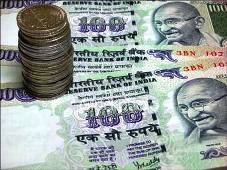 High on rhetoric and low on delivery is what I would call the RBI credit policy.
High on rhetoric and low on delivery is what I would call the RBI credit policy.
Coming on the back of a big-bang Cabinet reshuffle and the finance minister suggesting everything is on track or will be soon, the announcement is slightly disappointing.
I am not very well versed with banking and financial jugglery but what I understand -- like any common man -- is RBI has released Rs 17,500 crore (Rs 175 billion) into the banking system by way of a 25-bp cut in CRR.
This means there will be more and cheaper money for lending, more and cheaper money in the hands of businesses and individuals and, hence, the expected result is some sort of stimulus to the economy.
Considering the tight inflation scenario, I guess the RBI governor had little choice. After all, he is the one who has to balance inflation and growth.
And, it is always prudent to do things in a staggered manner, rather than opting for 50 or 75-bp cut in CRR.
The worrying part is that the GDP growth forecast for FY13 has been cut to 5.8 per cent from 6.5 per cent, and the wholesale price-based inflation target has been raised to 7.5 per cent from 7
And not to forget that the large twin deficits -- current account deficit and fiscal deficit -- continue to pose significant risks to both growth and macroeconomic stability.
The fiscal deficit this year would breach the budgeted level to reach 5.3 per cent of GDP.
This is frightening for India Inc.
To balance this scenario, the finance minister has assured us that the government was aiming at reining in the fiscal deficit down to three per cent by 2017.
This assurance makes tremendous sense to all stakeholders, including the pharmaceutical industry.
A healthy nation has to have healthy finances and that in itself will lead to weeding out inefficiencies at various levels within the government.
Ultimately, it will lead to investments in infrastructure and other key areas of the economy.
The writer is founder, chairman and CEO, Wockhardt Group












 © 2025
© 2025